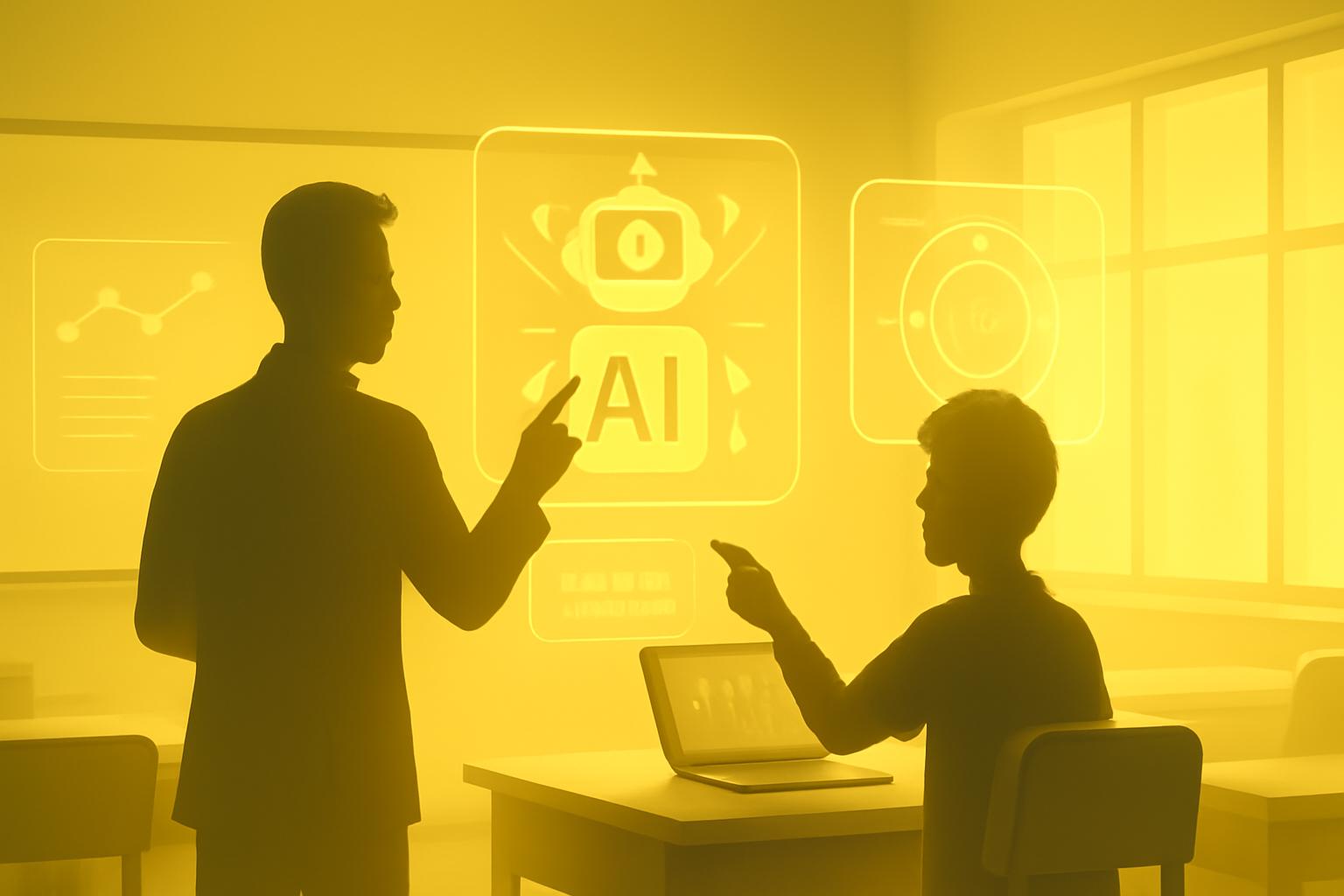Educators Shift Strategies to Address AI’s Growing Role in Classrooms
With the new school year underway, educators are reevaluating teaching methods to accommodate the increasing ubiquity of artificial intelligence tools such as ChatGPT. While these technologies can facilitate shortcuts that risk academic dishonesty, many educators recognize their potential to enhance personalized learning.
Balancing Challenges and Opportunities
John von Seggern, founder of the Futureproof Music School, highlights AI tutors’ ability to deliver “true personalization at scale,” offering students tailored, one-on-one educational support. AI can relieve students of routine research tasks, enabling them to concentrate on core learning objectives and acquire supplementary skills more rapidly.
Despite these benefits, AI’s reputation in education has been mixed. Data from the 2024–2025 school year indicates a significant decline in AI-generated submissions, reflecting concerns about misuse. Von Seggern acknowledges cheating as a key challenge, while Daniel Myers, associate professor of computer science at Rollins College, stresses that AI disrupts the traditional link between student submissions and genuine learning.
Myers explains that, unlike the era of pen-and-paper assignments where correct citations implied understanding, AI-generated work cannot reliably demonstrate student learning. He argues that educational tasks must retain sufficient difficulty to foster meaningful engagement, warning that unregulated AI use undermines this process.
Innovative Approaches to Teaching with AI
In response, educators are adapting by redesigning assessments and workflows. Von Seggern’s institution requires students to submit complete project workflows, allowing instructors to verify authentic effort while permitting AI integration where appropriate. Myers has moved foundational programming exercises into supervised classroom settings to ensure direct observation and guidance, reserving out-of-class assignments for more creative, AI-informed work that encourages student agency.
Myers emphasizes the importance of assignments that challenge students to set personal goals and exercise ownership, thereby reducing reliance on low-quality AI outputs. Such strategies aim to preserve the educational value of friction and critical thinking.
AI as a Catalyst for Enhanced Learning
When leveraged effectively, AI can significantly augment education. Myers notes that AI empowers students to undertake ambitious projects enriched by diverse knowledge and perspectives, likening AI to “having a minor in everything.” Similarly, von Seggern points out that AI can automate tedious components of tasks like music production, freeing students to focus on creative decisions and iterative refinement.
AI tutors also offer the promise of continuous, individualized support. Von Seggern describes AI assistants as “24/7 personal learning coaches” that adapt to each student’s background and pace, providing immediate feedback to accelerate learning.
Developers Tailor AI Tools for Educational Integrity
Recognizing education’s unique needs, AI developers are customizing models to align with pedagogical goals. Anthropic’s Claude for Education incorporates a Learning Mode designed to cultivate critical thinking by guiding students through problem-solving rather than delivering direct answers. The company has established a Higher Education Advisory Board featuring leaders from top universities to ensure alignment with educational values.
Anthropic acknowledges challenges remain, citing research showing that nearly half of student-AI interactions involve minimal engagement beyond seeking direct answers. The company commits to ongoing analysis of usage patterns to balance benefits with concerns about overreliance and misuse.
Looking Ahead
AI’s integration into education is irreversible, prompting a collaborative effort among educators, developers, and students to refine its use. While transitional challenges persist, the evolving landscape offers opportunities to enrich learning experiences without compromising educational integrity.
FinOracleAI — Market View
The growing adoption of AI in education presents a nuanced market impact. On one hand, demand for AI-powered educational tools and platforms is likely to increase as schools seek solutions that balance academic integrity with personalized learning. Conversely, concerns about misuse and the need for revised pedagogical methods may slow adoption or require significant investment in teacher training and content redesign.
Investors should monitor developments in AI education products, regulatory responses, and institutional partnerships that validate effective AI integration. The trajectory hinges on successful mitigation of risks related to cheating and overdependence, and the ability of AI to demonstrably enhance learning outcomes.
Impact: neutral













